Blood Clot Awareness: Know the Signs, Take Action
Did you know that cardiovascular disease is the leading cause of death for women? And that blood clots (VTE) are the third most diagnosed cardiovascular event? Yet, many women don't know the signs and symptoms or how lifestyle choices can significantly impact their risk.
Do you know the signs and symptoms of a blood clot? Are you aware of the everyday health decisions that could be putting you at risk?
"I don't know" would have been my answer to those questions eight years ago when I survived my first pulmonary embolism. Like many women, I was focused on taking care of everything and everyone around me, putting my own health last. I ignored symptoms, thinking I just needed rest or could follow up with my primary doctor when life was "less busy." It almost cost me my life.
When it Comes to Healthcare, Women Put Their Own Health Last on the List
According to the National Institute of Health (NIH), women in the United States make about 80% of healthcare decisions for their families. Despite that overwhelming number, when it comes to a woman's health, it often gets lost in priorities.
A recent study by MDVIP, a website developed by primary care physicians, showed 94% of women who took a health IQ quiz failed. Some of the findings included:
- 91% didn't know heart disease is the number one killer of women.
- 81% didn't know a pap test only screens for cervical cancer.
- 69% didn't realize that alcohol increases your risk for breast cancer (observational studies). Cancer and its treatments can increase blood clot risks.
Another survey statistic focused on attitudes when it came to seeing a doctor. For older women, 44% said they waited until a health symptom became urgent before scheduling an appointment, but that number jumped to 62% for women aged 20-34.
The Lifestyle Link
This lack of awareness extends to the link between lifestyle and blood clot risks. Many women are unaware that factors like obesity, diet, and lack of exercise can significantly influence their chances of developing a blood clot. Did you know dehydration is a common risk factor? Or that overweight and obesity are attributed to about 25% of VTE events, with risk increasing with weight gain?
Know the Signs, Save Your Life
Knowing the signs and symptoms of blood clots is crucial for early intervention and better outcomes. Here are some key things to watch for:
- Deep Vein Thrombosis (DVT): Swelling, pain, tenderness, and warmth in the affected leg.
- Pulmonary Embolism (PE): Sudden shortness of breath, chest pain, rapid heartbeat, coughing up blood.
My Story, Your Empowerment
I learned the hard way about the importance of blood clot awareness and proactive healthcare. From misinterpreting my own symptoms and delaying care before my first pulmonary embolism (PE) to a second pulmonary embolism that could have been prevented if I knew about lifestyle risks.
This experience fueled my passion for lifestyle-related blood clot risks and empowering women to prioritize their health.
Take Action Today
Don't wait until it's too late. Take action today to protect your health:
- Talk to your doctor: Discuss your blood clot risk factors, including lifestyle risks and any concerns you may have.
- Schedule a check-up: Get a comprehensive health check-up to assess your overall cardiovascular health - know your numbers: cholesterol, blood pressure and glucose levels.
- Learn about lifestyle changes: Explore our website and resources to learn about healthy habits that can reduce your risk of blood clots and improve your cardiovascular health and overall wellness.
- Join our community: Connect with other women who understand your journey and find support and encouragement.
Remember, there's no better time than now to prioritize your health.
